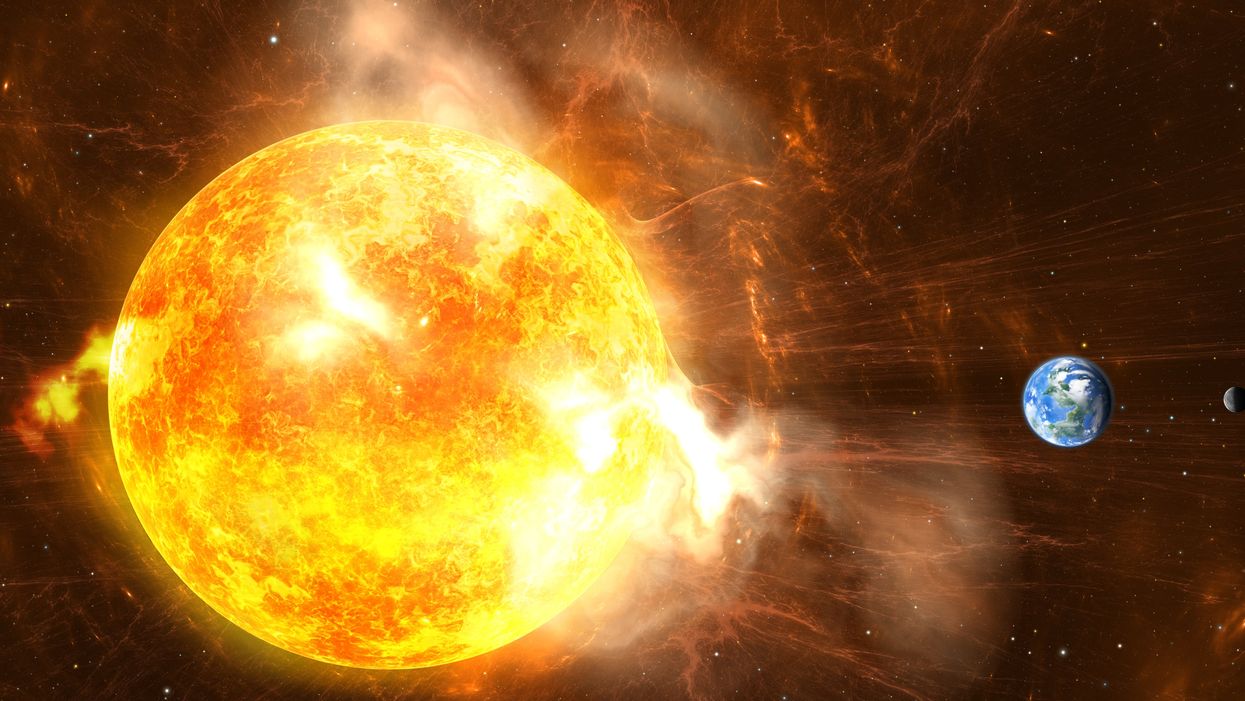Sinead Butler
Oct 11, 2021
A massive solar flare has hit Earth today, according to Space Weather Live.
The storm - otherwise known as a coronal mass ejection (CME) - was first spotted on Saturday (October 9) and occurs when an intense burst of radiation comes from the release of magnetic energy associated with sunspots, according to NASA.
So, what does that mean for us?
These kind of geomagnetic storms are ranked from G1-G5 (with one being the lowest and five being the highest).
The NOAA had warned the storm could reach category G2 (which is moderately strong), which it did.
Moderate G2 geomagnetic storm (Kp6) Threshold Reached: 04:47 UTC Follow live on https://t.co/Zkq26B89Y7 https://t.co/HidvAKhUoV— SpaceWeatherLive (@SpaceWeatherLive) 1634014806
At this level, it means the flare can still cause problems such as power grid fluctuations. Voltage alarms may also occur in high-latitude power systems which could potentially create problems for billions of people as it can affect communications.
It also can wreak havoc for spacecrafts, with satellite “orientation irregularities” and possible increased drag on low Earth-orbit satellites, NOAA said.
None of this has yet been reported to have taken place.
What time did this occur?
The storm was originally expected to occur from October 11 around the late afternoon/evening time and continue into October 12.
A CME launched on the 9th October is expected to arrive at Earth during the 11th (most likely during the afternoon… https://t.co/nYPBJUOtj2— Met Office Space (@Met Office Space) 1633945619
However, the event took actually took place later than expected in the early hours of the morning at around 3am (UTC), according to Space Weather Live.
Minor G1 geomagnetic storm (Kp5) Threshold Reached: 02:57 UTC Follow live on https://t.co/Zkq26B89Y7 https://t.co/ekQqwBqxw0— SpaceWeatherLive (@SpaceWeatherLive) 1634007608
Could the Northern Lights be seen?
It was predicted that the Northern Lights could be seen as far south as New York, as well as the north of the UK, as a result of the stormy space weather.
The flare emits radio waves and, as a result, it causes the Aurora to become enhanced because of the disturbance to the Earth’s atmosphere.
“Aurora is possible through 11th across much of Scotland, although cloud amounts are increasing, meaning sightings are unlikely,” the Met Office says.
“There is a slight chance of aurora reaching the far north of England and Northern Ireland tonight, but cloud breaks and therefore sightings are more likely in Northern Ireland.”
But since the solar storm occurred later than planned in the early hours of October 12, the Northern Lights were not visible, though they may be tonight.
How often does this occur?
While solar flares can last from minutes up to hours at a time, this particular solar flare apparently won’t be the last as we are at the beginning of a period of increased solar activity.
What has been the biggest solar event?
The Carrington Event in 1859 is the biggest recorded solar storm that has hit Earth which cause severe damage to telegraph communications and even caused telegraph pylons to spark and gave shocks to operators too, according to History.
Top 100
The Conversation (0)














